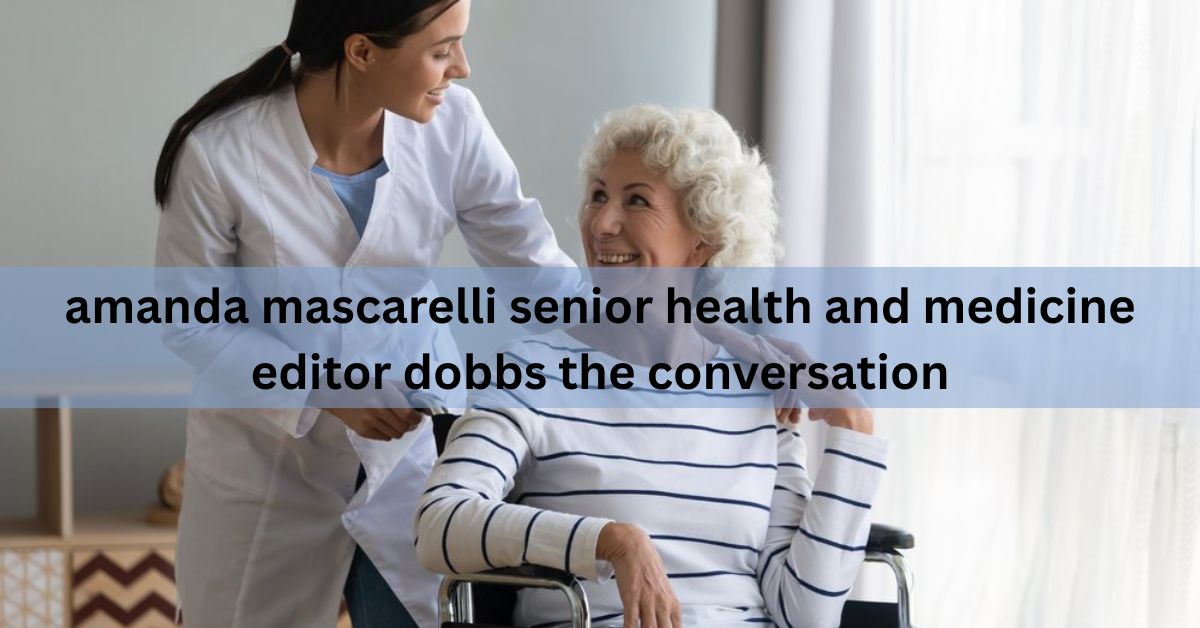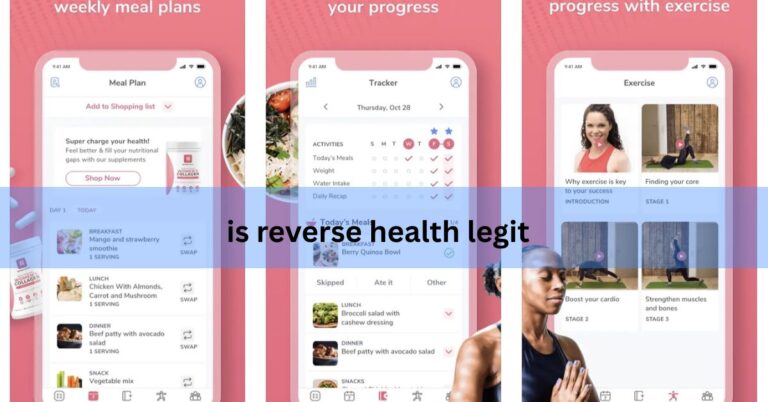Amanda Mascarelli: Senior Health and Medicine Editor & Her Role in Dobbs Coverage at The Conversation
The way we consume health news shapes our understanding of critical issues such as reproductive rights, medical research, and public health policies. Behind these stories are editors who make decisions about accuracy, tone, and balance. One such figure is Amanda Mascarelli, Senior Health and Medicine Editor at The Conversation, who has played an important role in guiding public discussions around the landmark case Dobbs v. Jackson Women’s Health Organization. This article explores her career, editorial style, and contributions to shaping thoughtful, evidence-based journalism on sensitive health topics.
Who Is Amanda Mascarelli?
Amanda Mascarelli is a journalist and editor with more than a decade of experience in health, science, and environmental reporting. Before joining The Conversation, she built her career as a freelance science journalist, publishing in outlets such as The Washington Post, Nature, and Science News for Students.
She was also the founding managing editor of SAPIENS, an online anthropology magazine. Her ability to translate complex research into engaging, accessible writing has made her a respected figure in the science communication community. In addition, Mascarelli was a Ted Scripps Fellow in Environmental Journalism at the University of Colorado Boulder, which highlights her credibility and dedication to high-quality reporting.
Editorial Role at The Conversation
As Senior Health and Medicine Editor, Amanda Mascarelli is responsible for commissioning, shaping, and refining articles written by academics and researchers. Her role is not just about grammar or style—it is about ensuring that articles:
- Present evidence-based information clearly.
- Balance academic rigor with public accessibility.
- Address sensitive topics like reproductive rights with nuance.
- Uphold standards of fairness, transparency, and inclusivity.
In practice, this means Mascarelli decides which stories are worth telling, guides authors through the editing process, and ensures that health content at The Conversation meets the needs of both experts and everyday readers.
Understanding Dobbs v. Jackson
The 2022 Supreme Court decision in Dobbs v. Jackson Women’s Health Organization overturned Roe v. Wade, removing federal protections for abortion rights in the United States. This ruling transformed reproductive healthcare, leaving regulation up to individual states.
For health journalists, Dobbs introduced new challenges:
- Navigating complex legal language.
- Highlighting the medical consequences of abortion restrictions.
- Reporting on disparities across states and populations.
- Balancing political sensitivity with scientific clarity.
This is where editors like Mascarelli play a crucial role—helping ensure coverage remains factual, compassionate, and informative.
Mascarelli’s Editorial Approach to Dobbs Coverage
In her role at The Conversation, Amanda Mascarelli has influenced how Dobbs-related articles are framed and understood. Her editorial direction emphasizes:
- Evidence over ideology – Articles are grounded in medical data, not political arguments.
- Accessibility – Complex issues are broken down for non-specialist readers.
- Diversity of voices – Authors include physicians, legal scholars, and public health experts.
- Clarity in context – Readers not only learn about the legal decision but also about its health impacts.
Case Studies of Reporting
Several Conversation articles edited under Mascarelli’s leadership explored themes such as maternal mortality, healthcare provider dilemmas, and patient access challenges post-Dobbs.
For example, coverage included:
- How abortion bans could increase risks for women with complicated pregnancies.
- The mental health effects of restricted reproductive care.
- The legal risks doctors face when treating patients under vague state laws.
These articles illustrate her ability to guide contributors in making scholarly analysis both relatable and actionable for the general public.
Health Impacts Highlighted in Reporting
The journalism under Mascarelli’s guidance has covered the wide-ranging health consequences of Dobbs.
| Impact Area | Key Issues Post-Dobbs |
| Maternal Health | Increased risk of morbidity and mortality due to restricted care |
| Access to Care | Limited availability of abortion and related medical services |
| Mental Health | Psychological strain from forced pregnancies |
| Healthcare System | Physicians facing legal uncertainty |
| Health Disparities | Disproportionate effects on low-income women and minorities |
This table shows how editorial decisions help focus attention on the broader health landscape beyond the court ruling itself.
Challenges and Opportunities in Health Journalism
While Mascarelli’s work demonstrates the strengths of editorial leadership, challenges remain. Editors must:
- Keep up with fast-changing state laws.
- Ensure neutrality without silencing important perspectives.
- Manage criticism from polarized audiences.
At the same time, opportunities exist to expand coverage through interactive tools, state-by-state maps, and partnerships with health organizations.
Lessons for Journalists and Editors
Other journalists can learn from Amanda Mascarelli’s editorial style:
- Always anchor reporting in peer-reviewed science.
- Provide context for non-specialist audiences.
- Highlight human stories alongside legal and medical facts.
- Diversify the range of experts consulted.
These lessons underscore why Mascarelli has become an influential figure in health journalism.
FAQs
1. Who is Amanda Mascarelli outside of her role at The Conversation?
She is a science writer and editor who has worked across multiple outlets and served as founding managing editor of SAPIENS.
2. Why is her role in covering Dobbs significant?
Her editorial leadership ensures that articles explain the medical and health effects of abortion laws clearly and accurately, avoiding misinformation.
3. Does Amanda Mascarelli write articles herself at The Conversation?
While she occasionally contributes, her primary role is editing and shaping content written by academic experts.
4. How can researchers publish under her editorship?
Academics can pitch article ideas to The Conversation through their online platform. Mascarelli works with authors to refine submissions for clarity and impact.
5. What sets her editorial style apart from others?
Her focus on combining scientific rigor with human-centered storytelling allows complex health issues to resonate with broad audiences.\
6. What types of topics does Amanda Mascarelli typically prioritize as Senior Health and Medicine Editor?
She often prioritizes emerging issues in public health, reproductive health, medical research, health policy, and the intersection of science with everyday life. This ensures readers gain timely and relevant insights.
7. How does Amanda Mascarelli ensure academic accuracy in articles about sensitive issues like Dobbs?
She works closely with scholars to fact-check their claims, verify sources, and maintain a transparent link to the original research. This helps prevent misinterpretation and ensures credibility.
8. Has Amanda Mascarelli’s work at The Conversation influenced academic engagement with the public?
Yes, by guiding academics to write in an accessible style, she has encouraged more researchers to share their expertise publicly, bridging the gap between science and society.
9. How does Amanda Mascarelli’s background in environmental and science journalism shape her health editing?
Her diverse reporting background allows her to view health stories in a broader context, connecting them with environmental, social, and cultural dimensions. This interdisciplinary approach enriches coverage.
5. What can aspiring editors learn from Amanda Mascarelli’s career path?
Aspiring editors can learn the value of versatility—building experience as a writer, developing subject expertise, and transitioning into editorial leadership roles. Her career shows that strong editing requires both subject knowledge and communication skills.
Conclusion
Amanda Mascarelli’s role as Senior Health and Medicine Editor at The Conversation highlights the importance of editorial leadership in shaping public understanding of health issues. Her guidance has been particularly valuable in covering the aftermath of Dobbs v. Jackson, ensuring reporting is clear, evidence-based, and compassionate. By bridging the gap between academic expertise and public needs, Mascarelli demonstrates how thoughtful editing can elevate health journalism and strengthen democratic conversations around critical issues.
Read More:
- Amanda Mascarelli Senior Health and Medicine Editor Dobbs The Conversation – A Deep Dive!
- Kosz Digestive Health Clinic Boise Aroentixrezo – Complete Guide for Patients!
- Digestive Health Center of Plano – A Complete Guide for Patients!
- Daniel Monahan Insurance Transition Health Benefits – Complete Guide!
- Corewell Health Zeeland Hospital – Complete Guide for Patients and Visitors!






